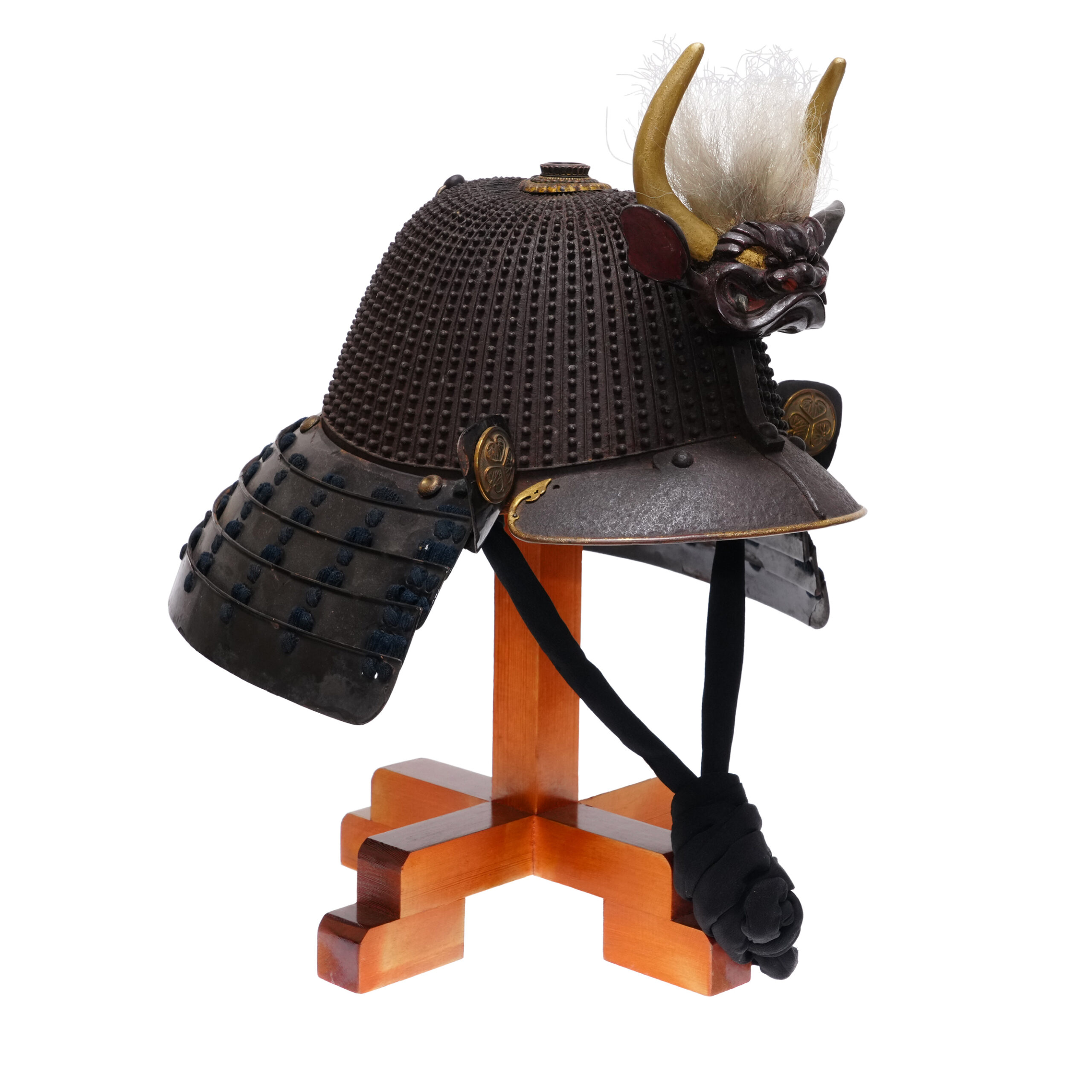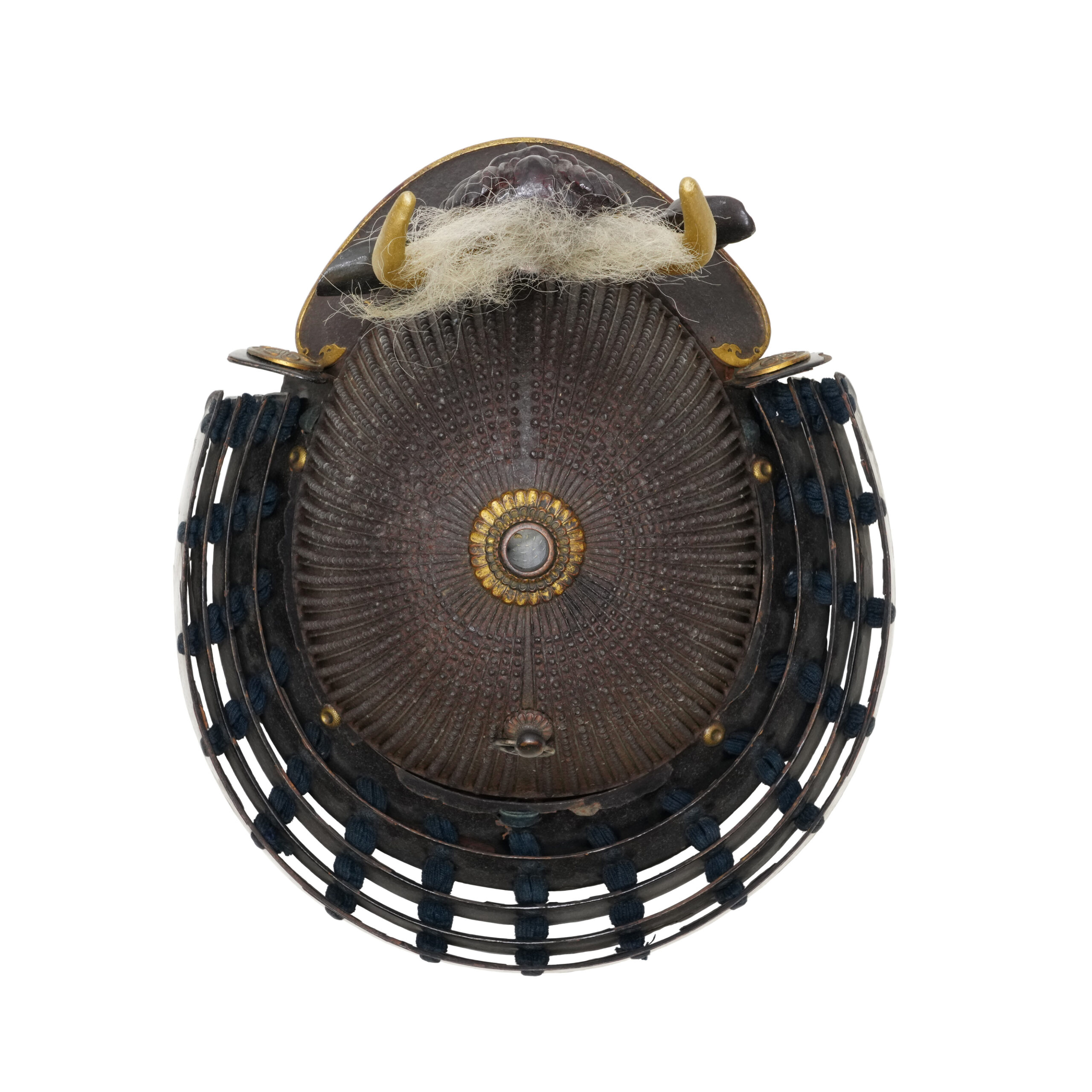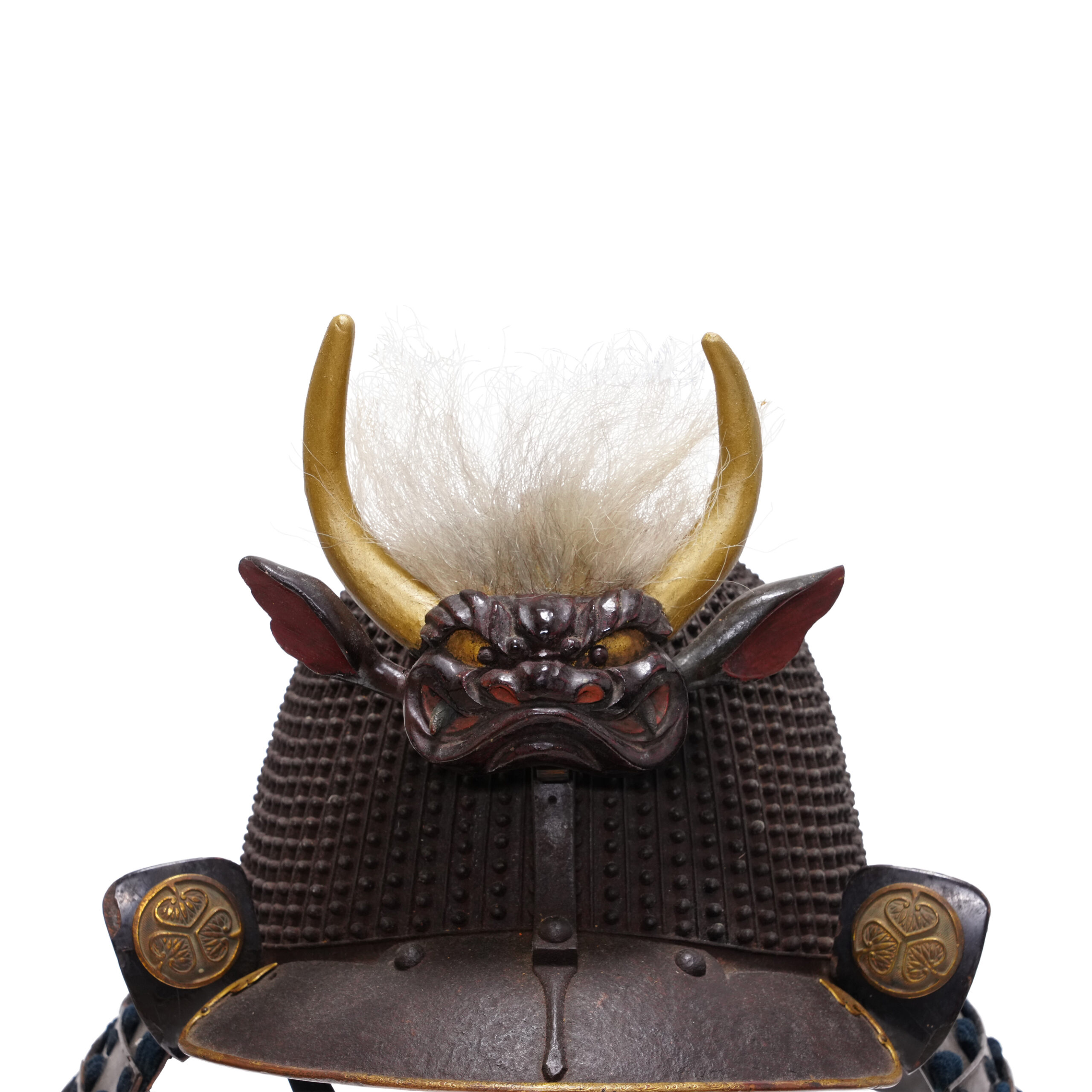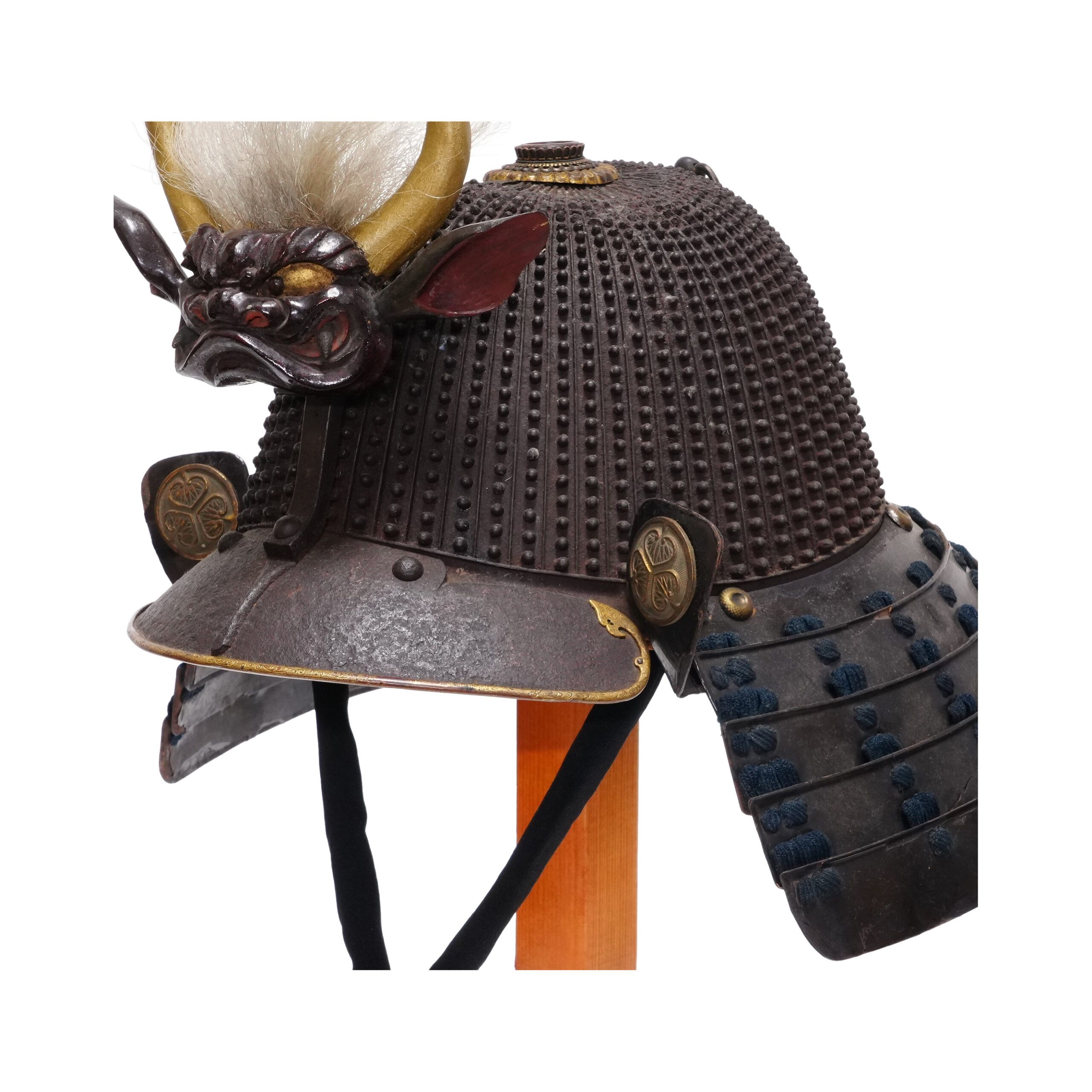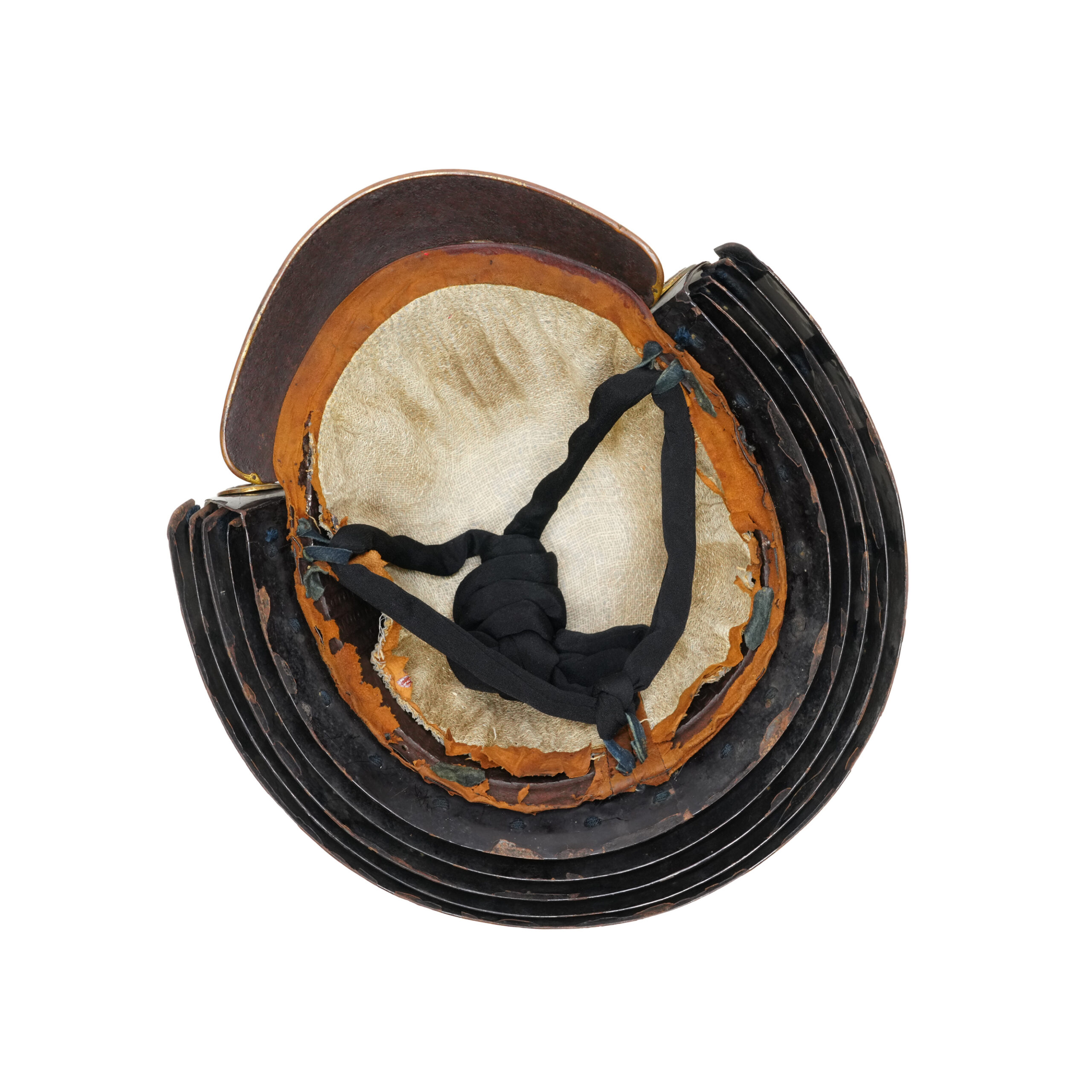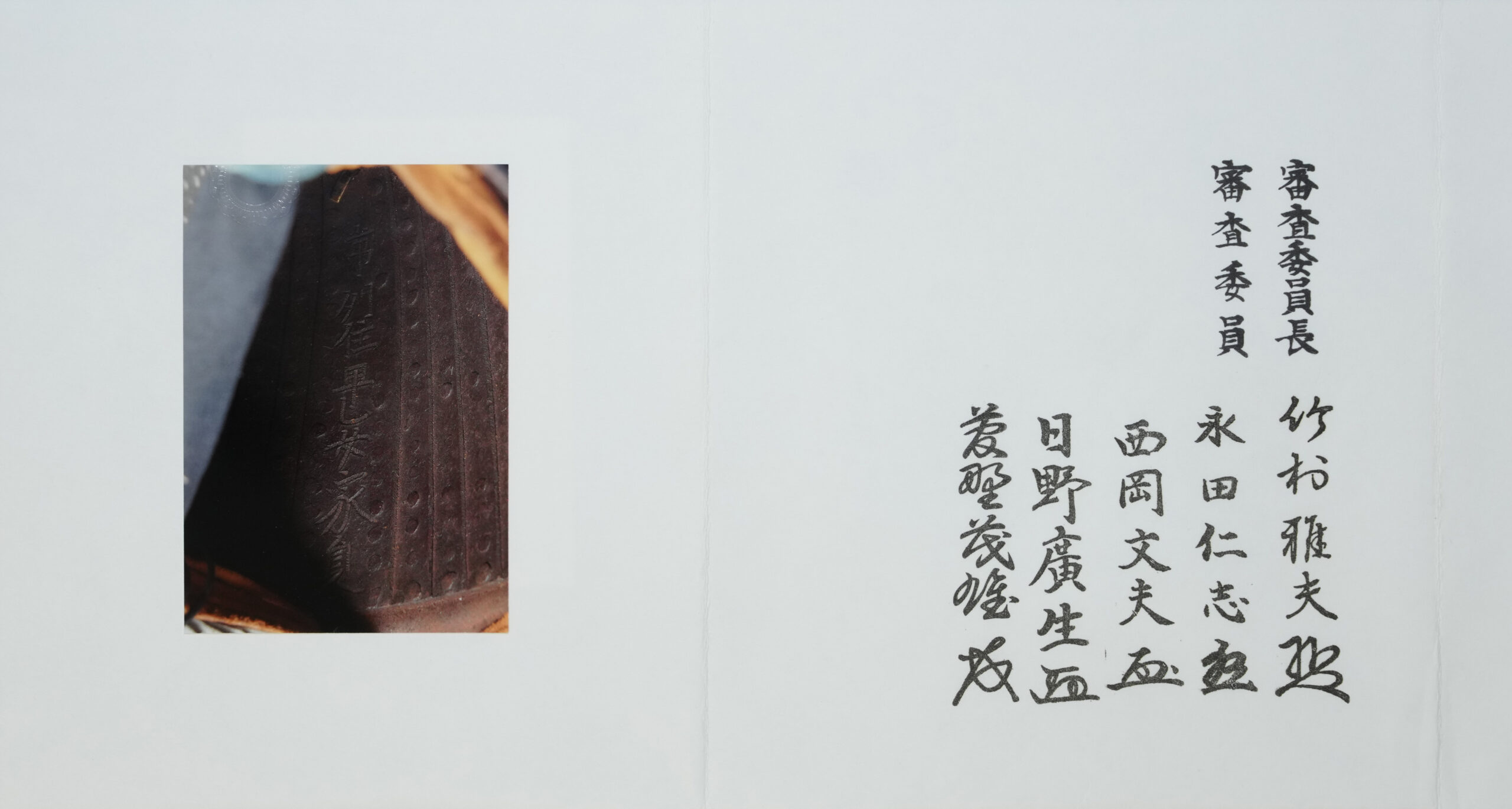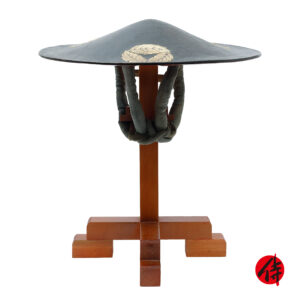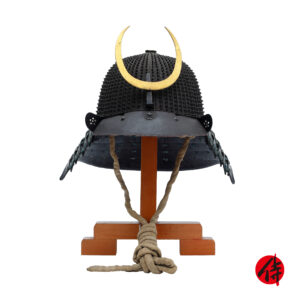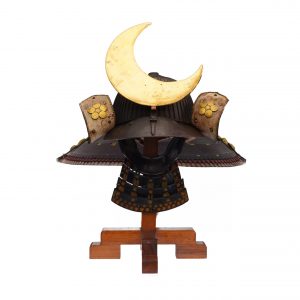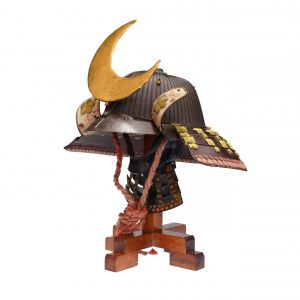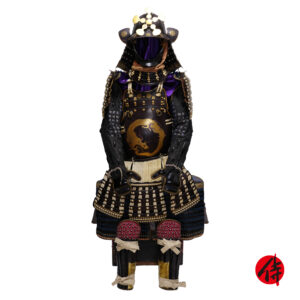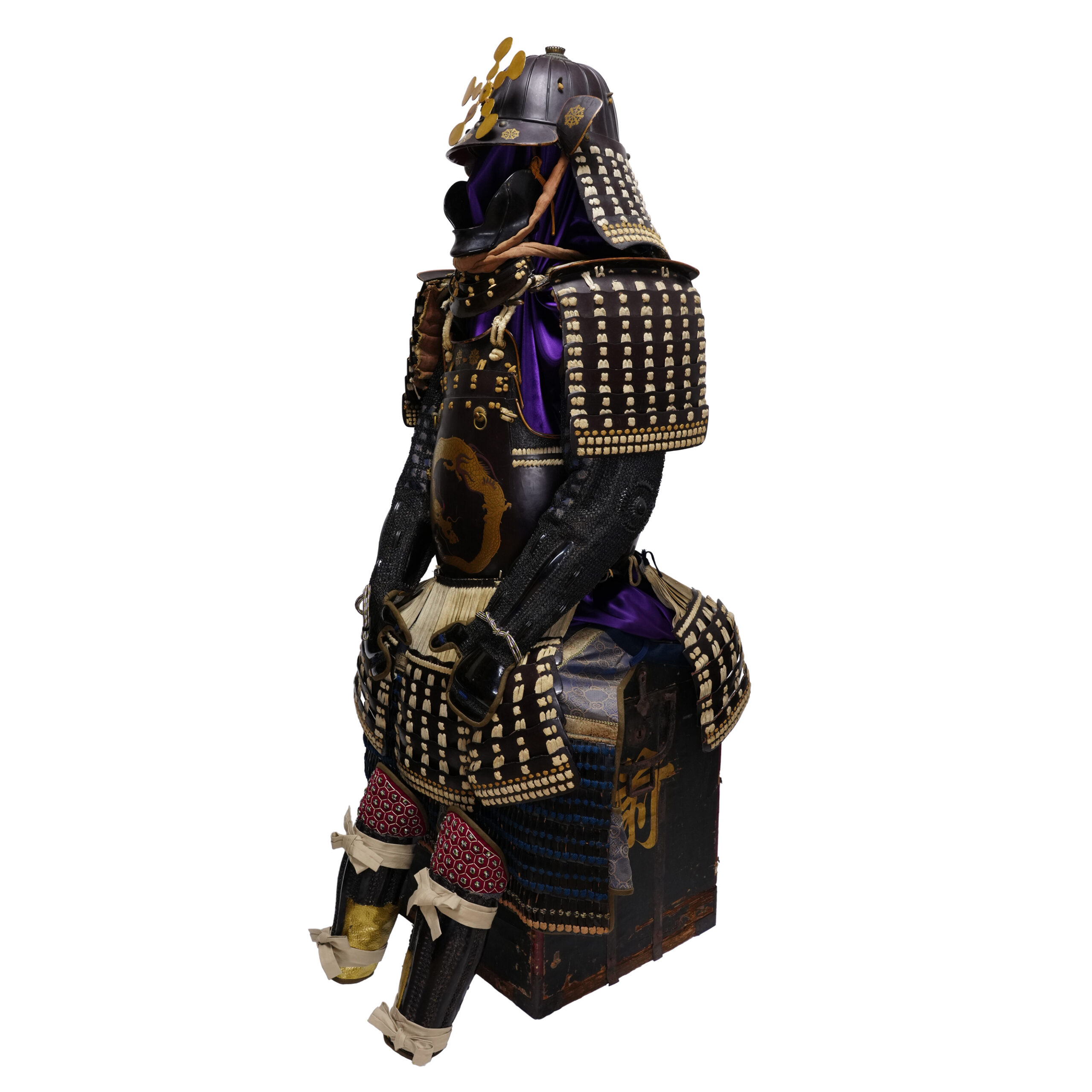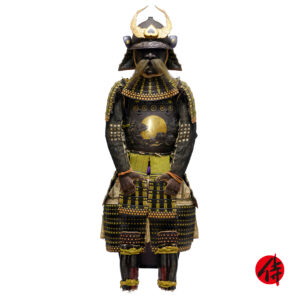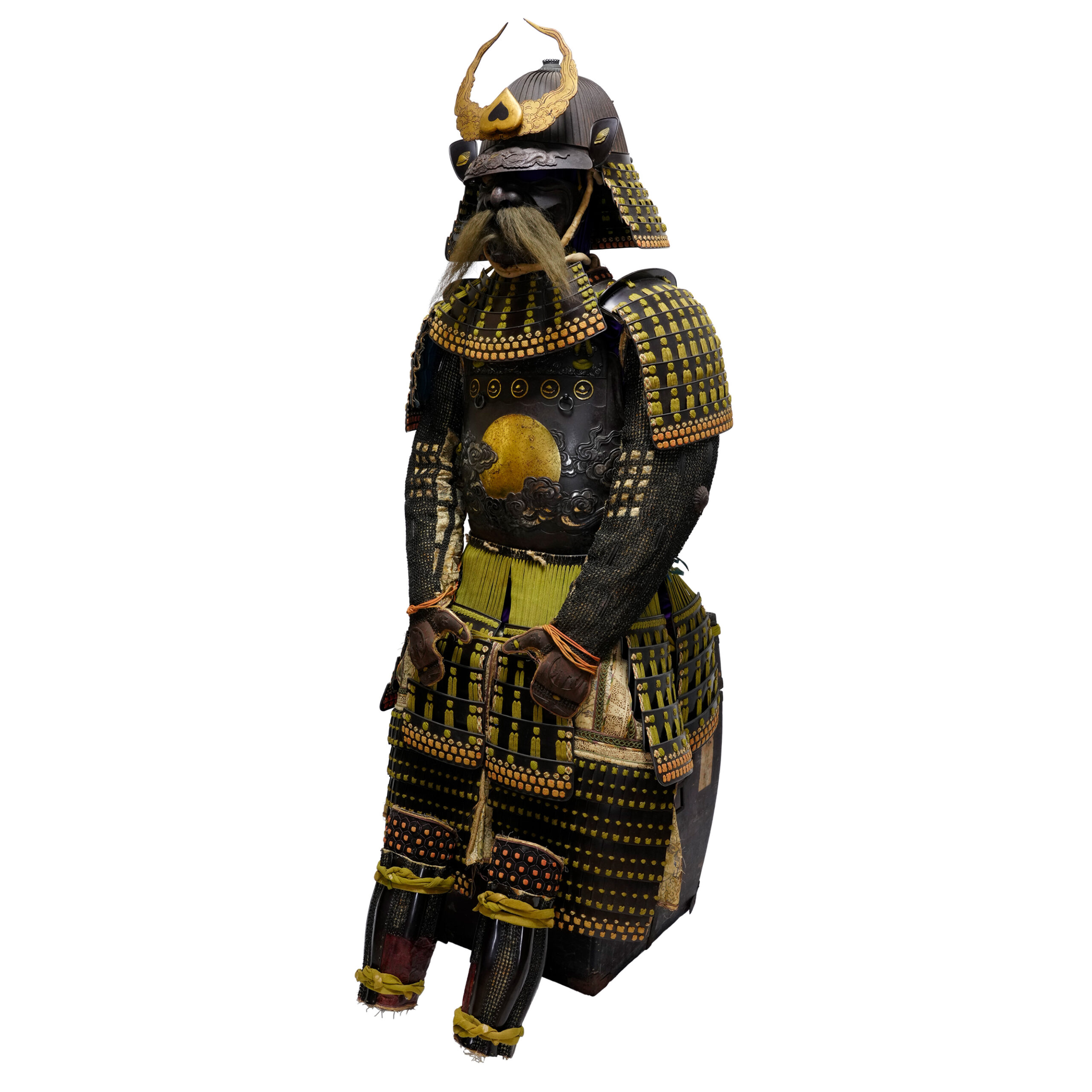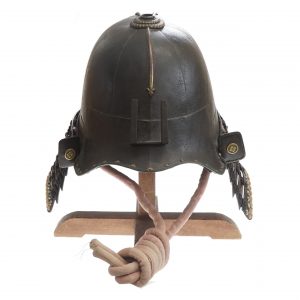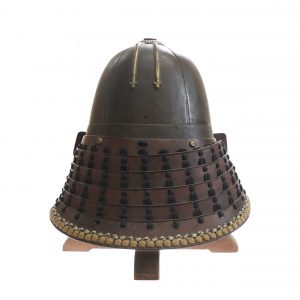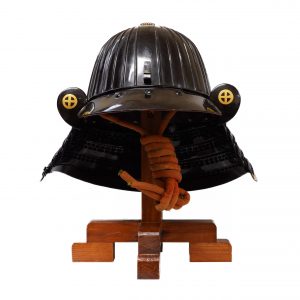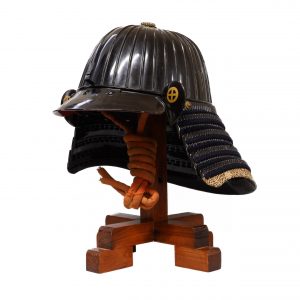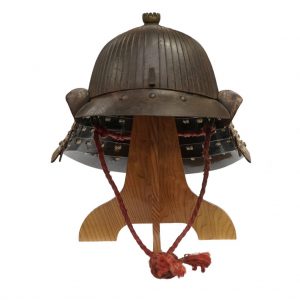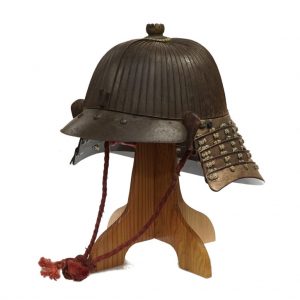Antique Samurai Helmet Rokujuni Ken Koboshi Kabuto with Tokubetsu Kicho Shiryo Certificate
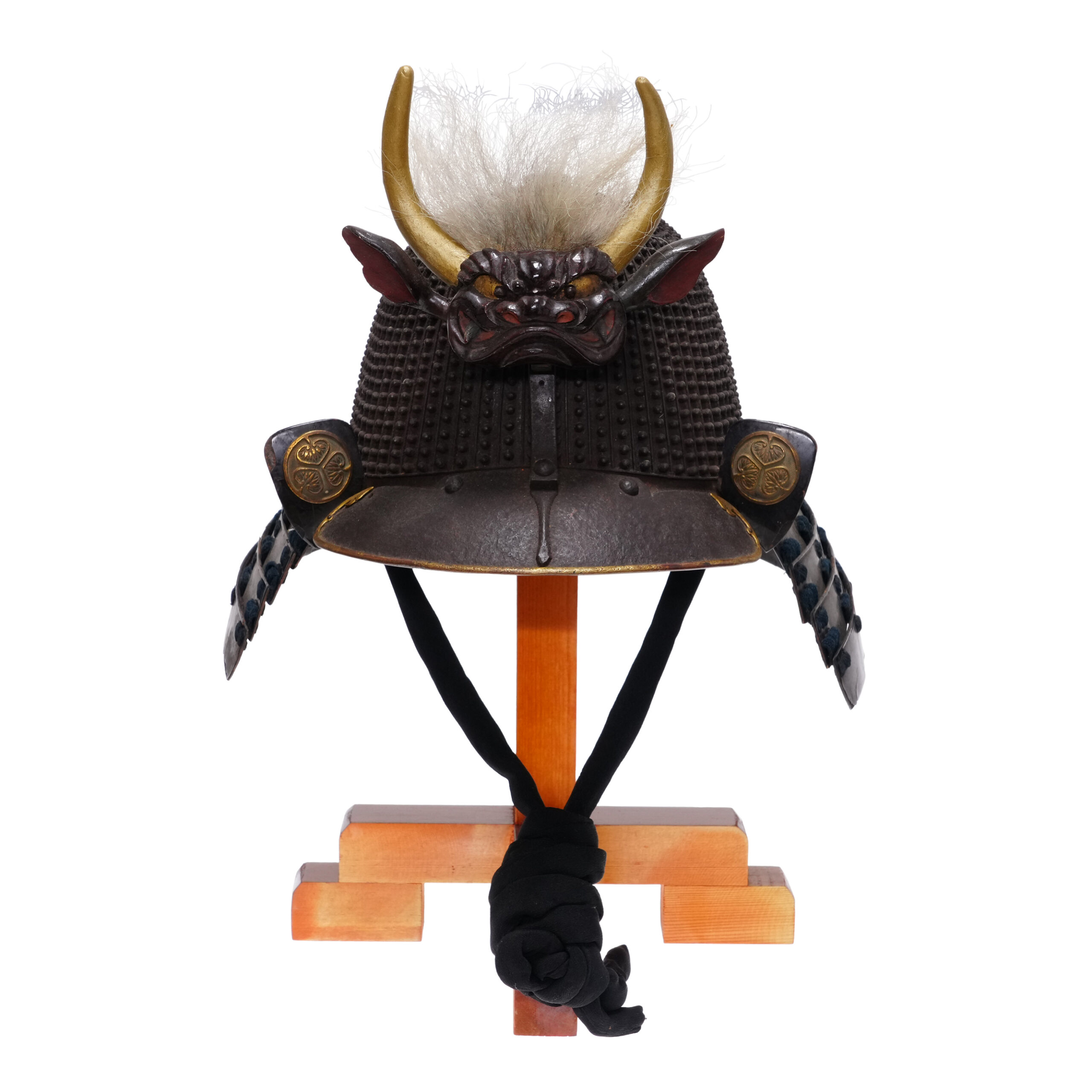
Period: Early Edo Period (appraised by The Association for the Research and Preservation of Japanese Helmets and Armor)
Prime Material: Iron
This Kabuto’s style is the Koboshi Kabuto (小星兜), which is categorized as the Hoshi Kabuto (星兜). The Hoshi Kabuto is a type of Samurai helmet that was born in the middle of the Heian period (around 888-1068). Small rivets that hold iron plates together. These rivets are called the Hoshi (星, star). In the Edo period, artisans made Kabutos not only Kawari Kabutos (please check the paragraph below) but also ancient-style Kabutos. For example, in the case of the Hoshi Kabuto, the Hoshis become smaller toward the top of the head; this form is called the Rinotori (厘劣り). It differs from the old-fashioned Hoshi Kabuto, in which all the Hoshis were the same size.
The Kabuto (兜, helmet) is a protector for the head. When people started using the Kabuto, it was initially designed for practical use. However, the principal purpose of its design has changed with time; Samurai warriors tried to express their dignity, personality, or religion by wearing the characteristic designed Kabutos. According to a theory, these unique designed Kabutos were made from the late Muromachi (室町, 1336-1573) to the Edo period (江戸, 1603-1868). This type of Kabuto is categorized as the Kawari Kabuto (変わり兜), and a variety of materials were used to create them. For example, animal fur, seashells, plants, and papers were used as materials for decoration.
Here we would like to introduce to you a little bit more about the history of Kabutos. Before the Kawari Kabuto’s production, the Suji Kabuto (筋兜) has appeared during the Nanbokuchou (南北朝, 1337-1392) period. At that time, the tactic was gradually changed from the piggyback fight style to battle with the Tachi (太刀) sword and the Naginata (薙刀, Japanese halberd) on the ground. Therefore, there was a rise in demand for the weight-saving of the Kabuto. Also, in order to turn the attack by swords, a new type of structure was invented; it is the Suji Kabuto (筋兜). Its form slides swords’ attacks when weapons hit the Kabuto. It is said that the production of the Suji Kabuto prospered in the Muromachi period.
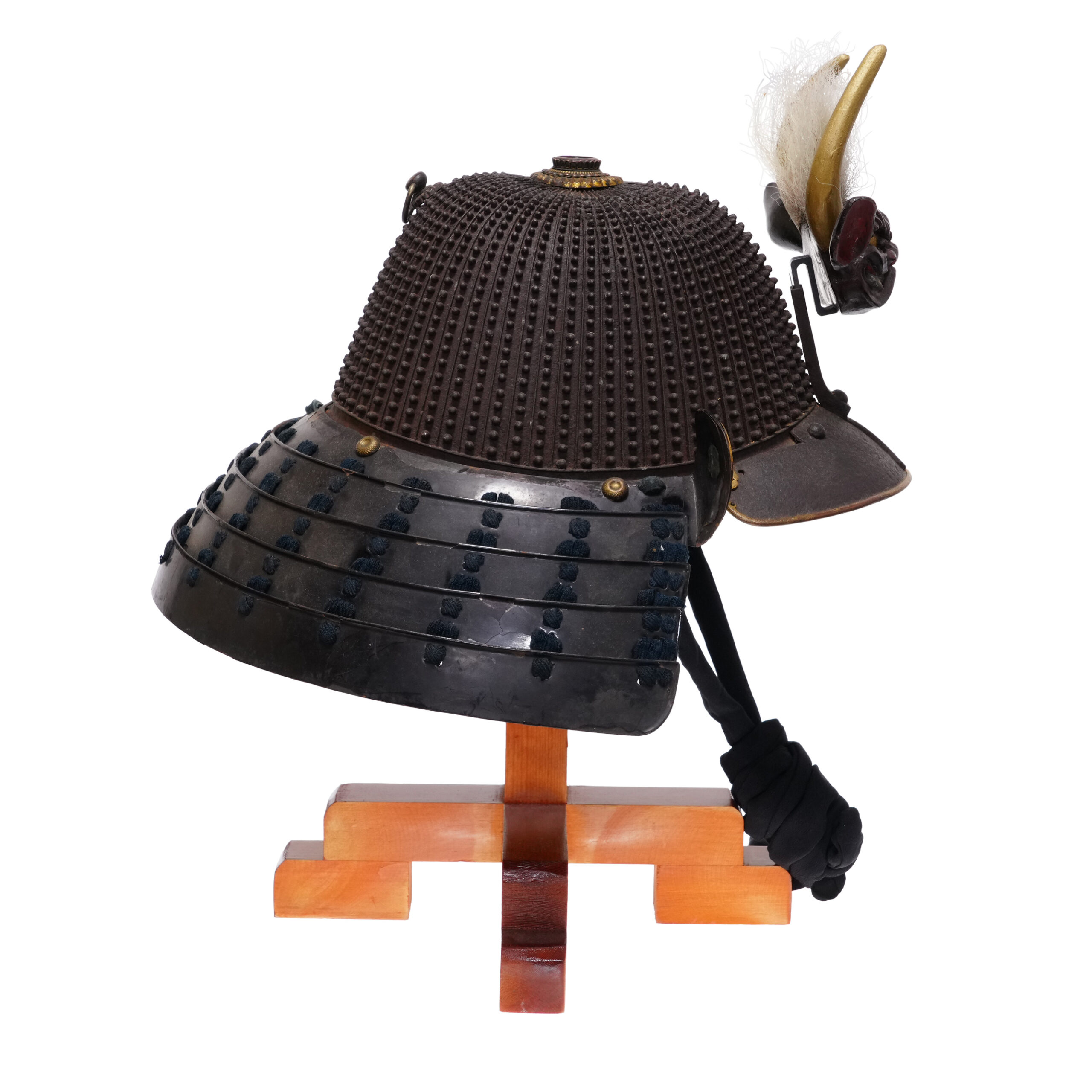

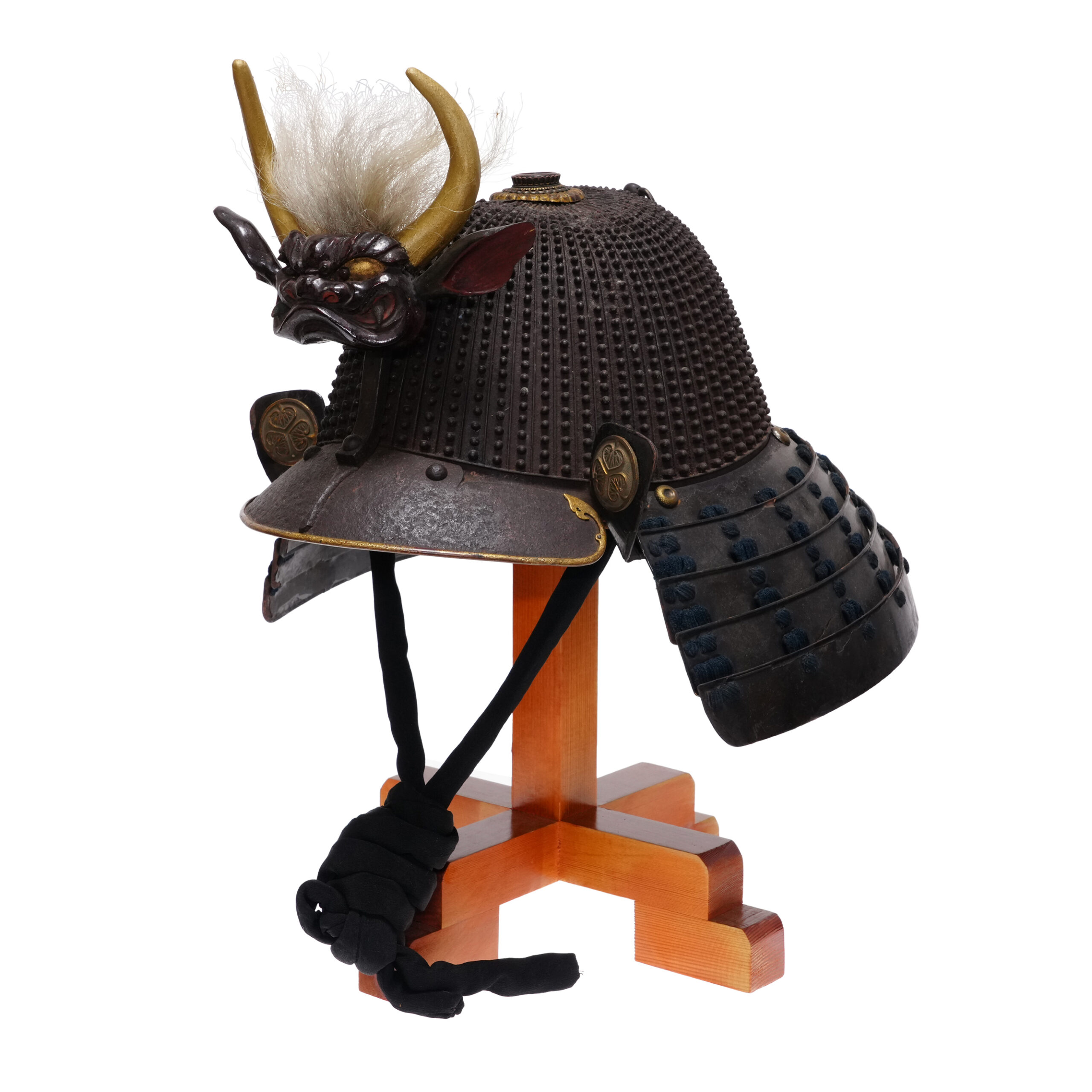
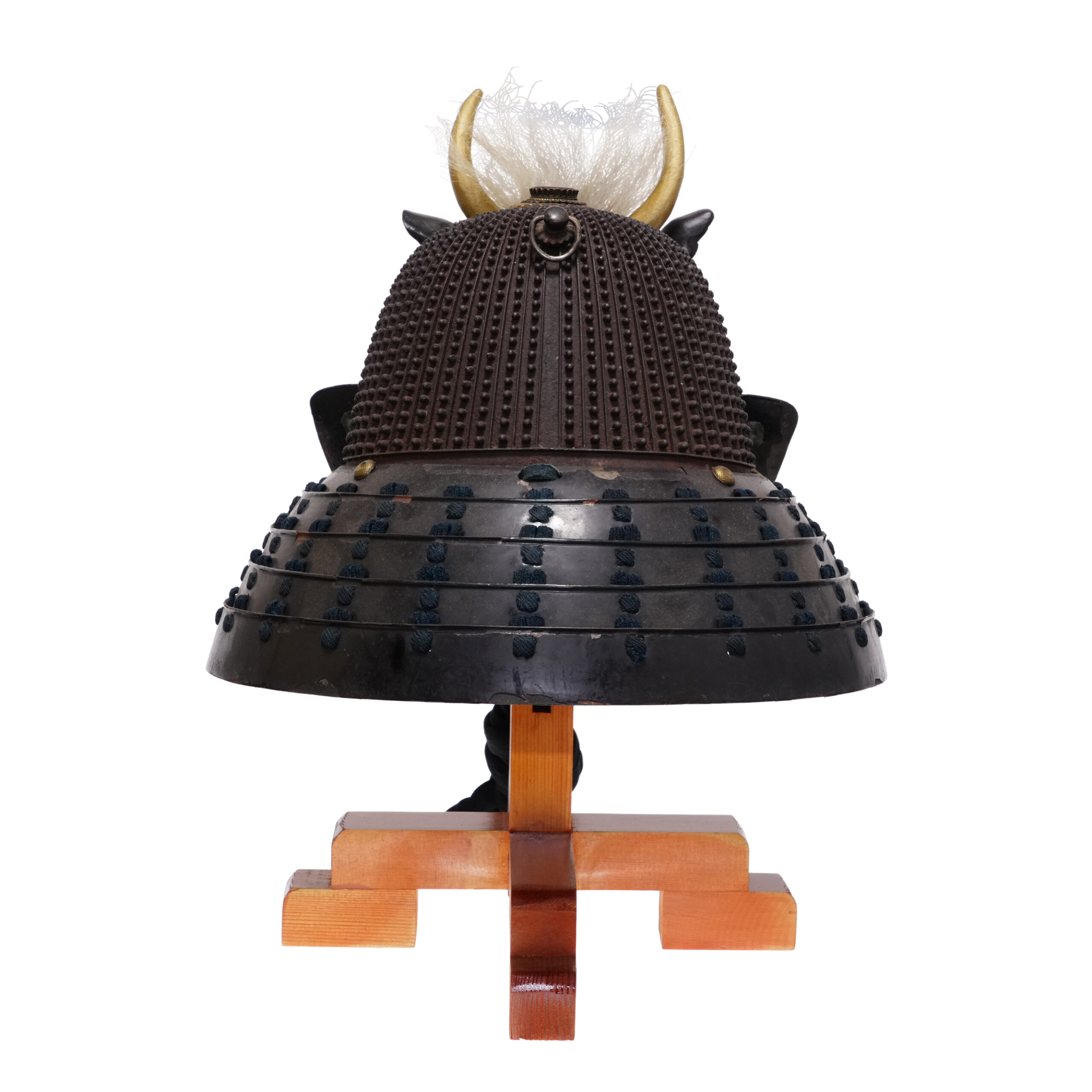
Please focus on the Maedate (前立, front decoration) part. We believe it is the Shikami/Shigami (獅噛) motif. The name of the Shikami/Shigami comes from the word “顰 (pronounced as Shikami).” It refers to a terrifying Oni (鬼) mask with raised eyebrows, an open mouth with fangs bared, or a frowning Oni or lion mask. The Oni is a kind of monster and is often depicted as the following figure: a human body with horns and fangs. They are usually harmful to people but sometimes helpful. It is because Onis are not just monsters but are imagined in various forms, such as vengeful spirits of humans, legendary gods, Yōkai (妖怪, monster/ghost), and spiritual beings, and their definitions differ depending on the scene in which they appear. Now, please look at this Maedatemono. It has a grim angry facial expression, and its long gold-colored horns and large ears make it a virtuous enemy. The hair on its head stands on end, and combined with its wrathful expression, it is even more impressive. Even a young Samurai would have been intimidated by the enemy from a distance if he wore a Kabuto with this decoration.
Now please focus your attention elsewhere. The Fukikaeshi (吹き返し) is both ends of a Kabuto. It protects the face from swords and also shows its beautiful workmanship. Family crests are sometimes designed on this part, as seen on this Kabuto. The Fukikaeshi of this Kabuto is decorated with a golden mark. This design is called the Aoi-Domoe / Mitsuba-Aoi-no Mon (葵巴/三つ葉葵の紋 ). It is a plant pattern in which each stem branches and has characteristic heart-shaped leaves. And today, it is known as the family crest of the Tokugawa Shogunate family led by Tokugawa Ieyasu (徳川 家康, 1543-1616), a famous military commander of the Warring States period. This plant pattern has also been used for the crest of the Kamo shrine in Kyoto prefecture. As mentioned above, the famous Shogunate family, the Tokugawa family, had their family crest with three leaves of Aoi due to their relationship with the Kamo shrine. As its leaves have a habit of always facing the sun, and the word “Aoi” is taken as “Aogu (仰ぐ, looking up)” for the sun, people thought the Aoi pattern would bring good fortune.


This Kabuto has a Mei (銘, engraved inscription) on its inside. The certificate mentions that it is written as follows: 常州住早乙女家貞 (Jōshu-Ju Saotome Iesada). Jōshu is today’s most part of Ibaraki prefecture. Iesada was an armorer active in the early to middle Edo period. He was the fourth of the Saotome family. This family is said to have branched off from the Myochin (明珍) family, which was highly regarded as a family of armor makers. Together with two other skilled metalworkers: Shoami Masanori (正阿弥政徳) and Umetada Myoju (埋忠明寿), Iesada was called the San Meikou (三名工, three master craftsmen). It is said that there were several metalworkers with the same name in later times; we treated the famous Iesada here.
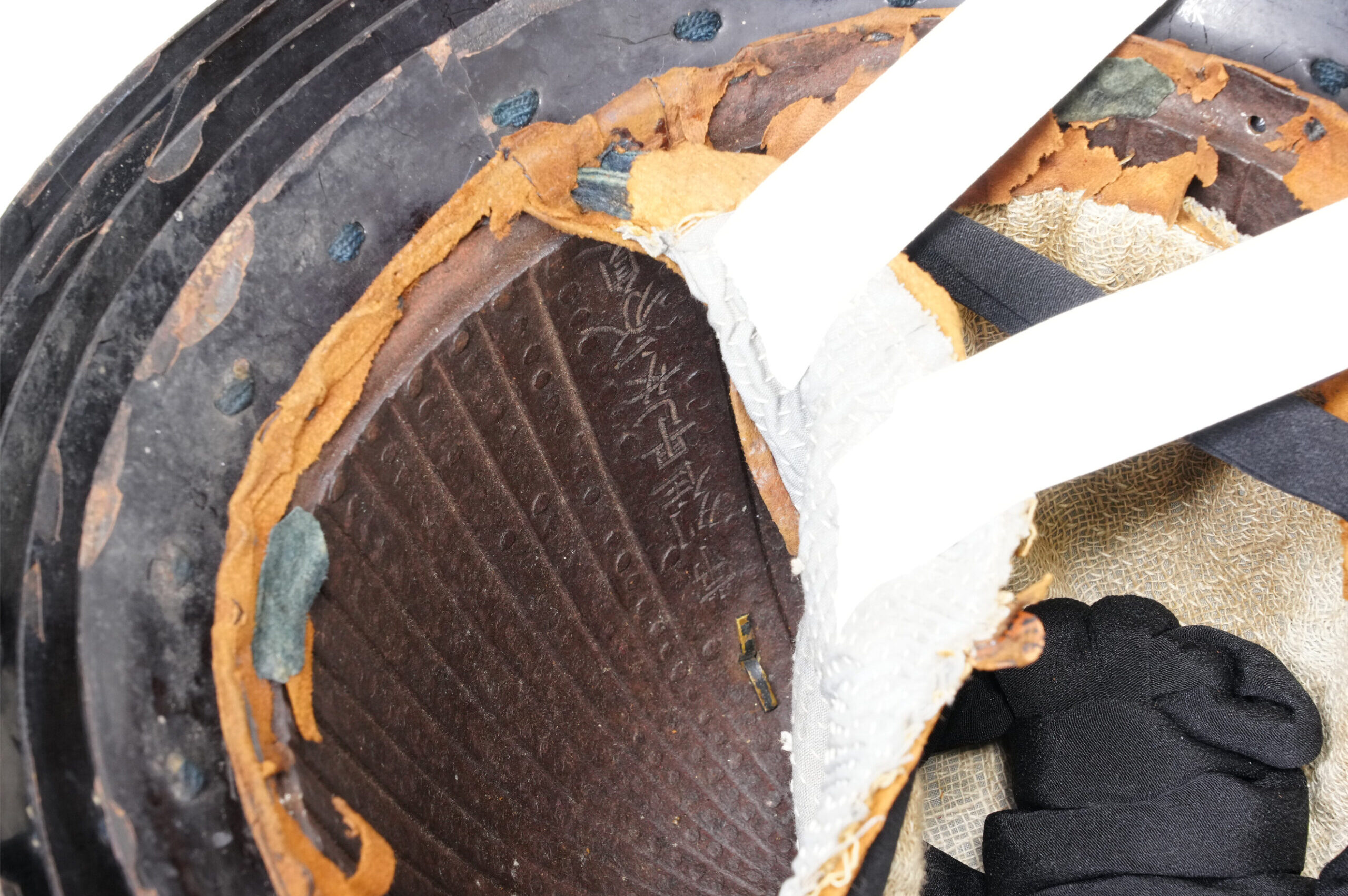
Certification: Tokugetsu Kicho Shiryo Certificate
The certificate was issued by The Association for the Research and Preservation of Japanese Helmets and Armor, which is the most trusted Japanese armor appraiser in Japan. Tokubetsu Kicho Shiryo means special rare article. It is ranked as the third highest of five rankings.
This helmet was authenticated on October 10th 2021 as a Tokubetsu Kicho Shiryo and the paper will mention the armor was made in the early Edo period. You can receive this original authentication paper.
An English translation of the certificate is available on request. We won’t charge any additional fee.
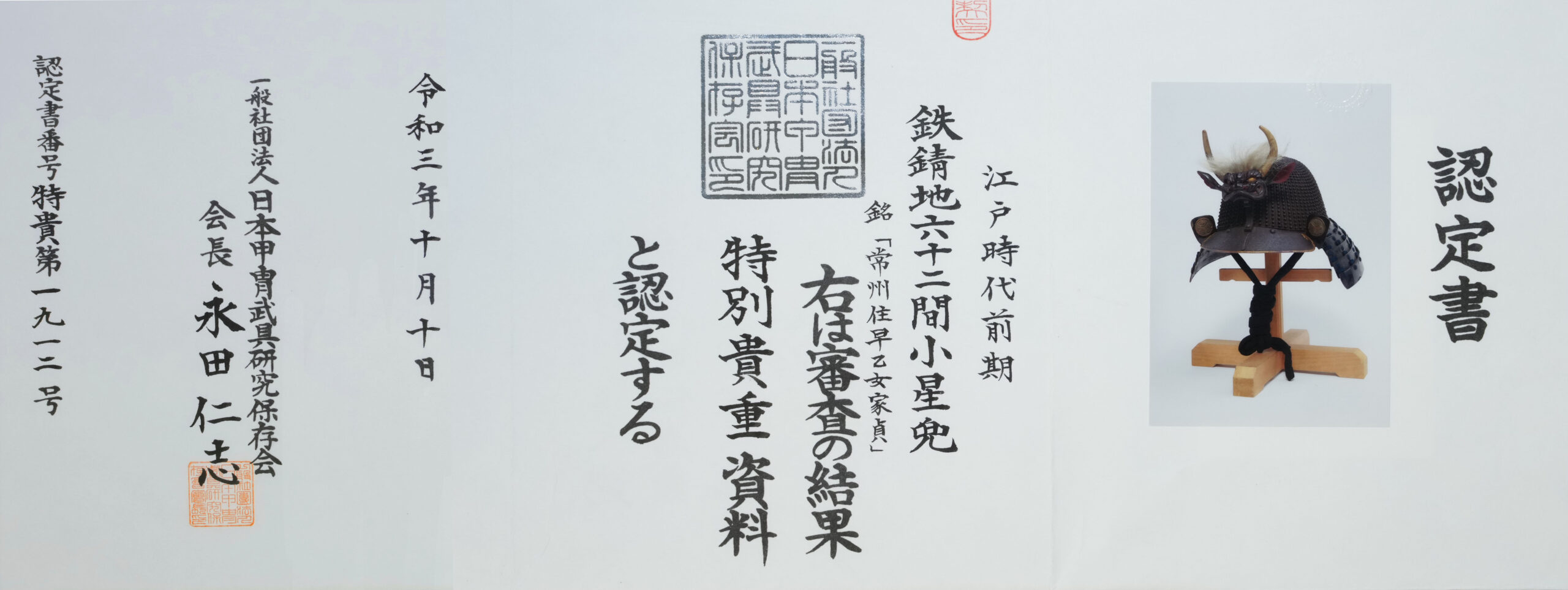
【About us】
Samurai Museum is located in Tokyo, Japan, exhibiting antique artifacts related to the Samurai history. Samurai Museum Shop is the place for those who are interested in Japanese culture and craftsmanship. We deal with antique Samurai swords/armor, traditional crafts made in Japan and so on.
【Antique Japanese helmet (Kabuto) and Export process】
After receiving the full payment from you, we will apply for its export permit from the Board of Education to legally export the helmet to other countries. It normally takes around 2-4 weeks to receive this permit. And we would like you to expect at least 1.0-1.5 months for your order to arrive at your given address after you ordered.
【Payment Method】
We accept payment through Stripe (Credit card), PayPal, Apple Pay or ChromePay, all of which are secure payment methods. Also, you don’t need to make an account on Stripe for the checkout. If you prefer other payment method, please contact us. After confirming your payment, we will apply for an export permit. You may either pay in JPY, USD, AUD, CAD, EUR, CHF or GBP. The price is set in Japanese Yen. Prices in other currencies are automatically calculated based on the latest exchange rate.

【Shipping Duration】
We ship via EMS (Japanese Postal Service). It normally takes at least 5-14 days to receive any packages after you place an order. It might take longer depending on the season or custom clearance. We will inform your order’s tracking number via email.
*Please keep in mind there is possible delay expected in delivery with EMS in some countries due to the pandemic in the world. We offer free shipping only when we can ship by EMS.
【How to make sure the condition】
Please keep in mind that what you are going to purchase is an antique item. We uploaded high resolution photos for you to check its condition thoroughly. If you like to see more photos with different angles, please feel free to contact us. We will be happy to send them to you so that you can make informed decision. It is essential for us to know that you are happy with your choice of a sword. and we are prepared to use the best of our ability to serve you.
【How To Contact Us】
Please contact us through email, Facebook Messenger or Live Chat if you have any questions. You can find each icon on the right side of the website. Please click one of them to reach us. We will reply to you within 1-2 business days.
【How To Preserve Antique Samurai Armor/Helmets】
Dryness, humidity, and bad ventilation might deteriorate the condition of antique Samurai armor/helmet. The best temperature to preserve Samurai armor/helmet is around 20℃ in Celsius, and humidity should be about 60%. Direct sunlight should be avoided. We recommend storing armors/helmets in a room with good ventilation. If you like to display them outside the boxes for a prolonged time, we suggest using a glass case in order for dust not to be accumulated easily. In case you don’t use a glass case, please make sure to regularly dust off from the armor/helmets by using a soft brush made of delicate cloth or brush for painting.
If you like to know more about the preservation of this armor, please feel free to contact us.

